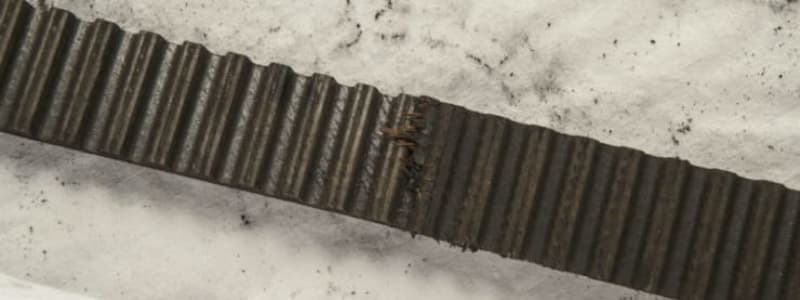
Timing belts are incredibly unpredictable so it is very difficult to know when they are going to break or tear. There are a few things which do cause them to wear out faster
Changes in temperature
The timing belt is made from rubber. Rubber stretches when it gets warmer and then contracts as it cools again. Extremes of hot and cold can cause the rubber to develop minor cracks in the outer surface of the belt. This can cause the timing belt to need replacing faster. Keeping your car in a garage rather than outside can help to reduce the extent of the changes of temperature to which your timing belt is subjected.
Get quotes for a Timing belt Job
Oil leaks
Oil can interfere with the timing belt. It can get in between the belt’s teeth and can cause the belt to slip and slide and even come off entirely. If you notice any oil leaking from your engine then you should get this seen to as soon as possible as it could cause a lot of further damage if it makes the timing belt come off.
Water leaks
Water leaks will have a similar effect as oil leaks on your timing belt. The effect can be made worse if the water which is leaking has been mixed with antifreeze. If you notice that your car is leaking water from an unusual place, have it checked over by your local mechanic. This will prevent the water from having an effect on the lifespan of your timing belt.
Get quotes for a Timing belt Job
Dry climates
Cars which are usually driven in countries which have a warm, dry climate will often have to have their timing belts replaced more often than those driven in more temperate climates. The dry air causes the rubber to become brittle more quickly and this can cause the belt to crack or snap. If you regularly drive in a dry climate then you should have your belt checked more often than every 60,000 miles, just to be on the safe side.
Older belts
Belts which were fitted to older vehicles have angular, trapezoid shaped teeth. The newer belts have curved teeth which are more forgiving and wear out less quickly. If you have the choice over which belt you can have fitted to your car, always choose the curved belts as they will last much longer.
Driving your car infrequently
The belt can become stiff if the vehicle is not driven very often and this can make it more brittle. Cars which are driven infrequently will often need to have their timing belt changed after fewer miles than cars which are driven regularly.
What does it cost to replace a timing belt?
A timing belt is a little complicated to change, since it is difficult to get to it in the engine. Therefore, the hourly rates at the garage influences a lot on the final price. To get an exact price for your car specifically, get your quotes here on Autobutler. Then you can compare location of the garages, reviews from other car owners, the garage's describtion of the job and of course the price.
Car-owners that compare prices on timing belt jobs on Autobutler, can potentially save 21 percent in average, which equals to 101 pounds .
Get quotes for a Timing belt Job






